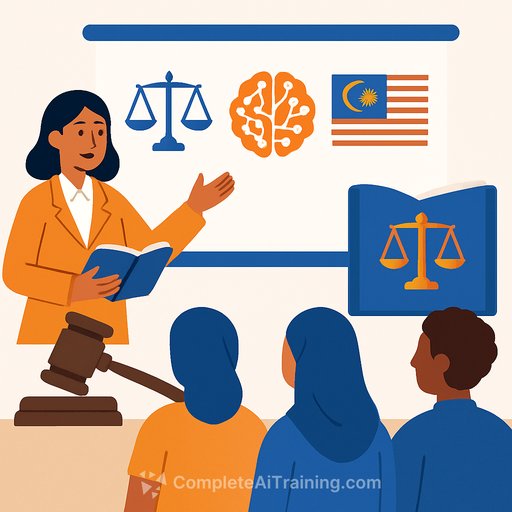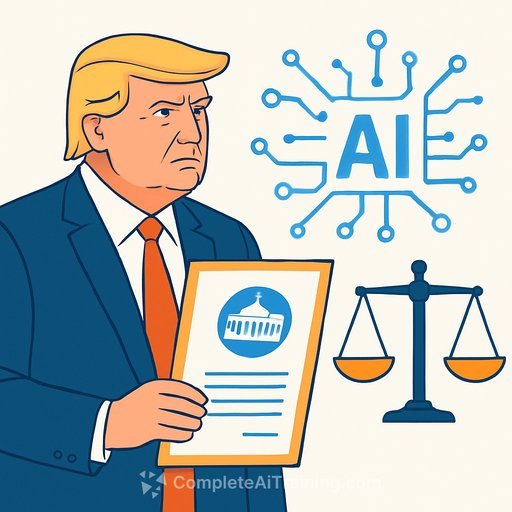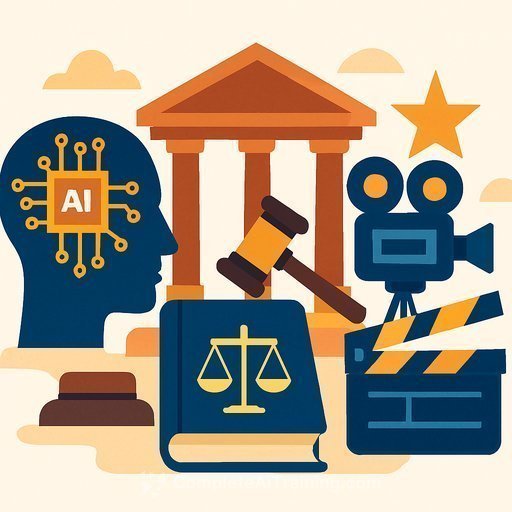Lessons for Malaysia from the rise of legal AI startups
A junior lawyer helped build a legal AI company worth US$5 billion. The headline is impressive, but the signal is bigger: core legal work is shifting from manual effort to machine-assisted delivery. This is no fad. It's a change in how legal services are produced, priced and policed.
For Malaysian practitioners, this is both an opening and a risk. Firms that move now will cut turnaround times, expand margins and serve clients across borders. Firms that wait will inherit higher cost bases, uneven quality and growing liability.
What this shift means for legal work
- Document-heavy tasks (review, diligence, research, discovery) move to machines; lawyers focus on judgement, advocacy and strategy.
- Clients expect faster cycles, clearer pricing and audit trails that show how AI was used.
- Cross-jurisdiction delivery becomes realistic for boutiques that deploy strong AI workflows.
- Quality control evolves from "who drafted it" to "how the system was configured, overseen and verified."
Key risks to manage now
- Privilege and confidentiality: using third-party tools can expose sensitive data. You need strict scoping, redaction and data residency controls.
- Accountability: if an algorithm errs, the duty of care still sits with the lawyer. Human oversight must be clear, documented and defensible.
- Bias and fairness: unchecked models can skew outcomes. Independent testing and repeatable evaluation are required.
- Vendor risk: black-box tools, weak terms, or offshore processing can breach professional obligations.
Regulatory moves Malaysia should take
- Update PDPA and CMA for AI: mandate transparency on automated decision-making, require audit logs for high-impact uses, tighten cross-border transfer rules, and broaden breach notification to include model leaks.
- Adopt a risk-based AI framework: human oversight for high-risk legal tasks, record-keeping obligations, incident reporting and penalties for undisclosed automation in client work.
- Create a regulatory sandbox: allow supervised pilots for AI tools used in courts, legal aid and law firm workflows, with metrics for accuracy, bias and user impact.
- Issue professional guidance: clarify competence duties, confidentiality standards for AI use, and required disclosures in engagement letters and bills.
Practical steps for firms and in-house teams
- Adopt an AI use policy: approved tools, prohibited inputs, review thresholds, and sign-off rules.
- Update engagement letters: disclose AI use, define human review, set error handling and data use terms.
- Vendor due diligence: data location, sub-processors, indemnities, model training on your data, deletion rights, and SOC 2/ISO 27001 evidence.
- Protect privilege: local processing or private tenants, DLP, redaction by default, and segregated client workspaces.
- Quality assurance: require source citations, run red-team prompts, perform bias checks, and double-verify critical outputs.
- Matter management: tag when AI is used, capture time saved, show review steps, and price on outcomes where appropriate.
- Train your people: core AI literacy, prompt controls, confidentiality hygiene and error patterns to watch.
- Start small: pilot one workflow (e.g., NDA review, discovery triage), measure speed, accuracy and client satisfaction, then scale.
Courts and access to justice
- Equip legal aid and community clinics with vetted tools; fund shared licenses so small firms and sole practitioners are not left behind.
- Build court-approved templates and AI assistants for form filling, triage and scheduling, with strict safeguards and human help on request.
- Open public legal datasets (anonymised) to boost local model quality and lower costs for homegrown startups.
Legal education that fits the moment
- Embed tech and ethics in the core curriculum: error modes, evaluation methods, privacy, bias mitigation and professional responsibility.
- Run interdisciplinary clinics with CS and data teams to build tools for real matters under supervision.
- Make CPD credits available for AI competence and model governance.
What good could look like in 24 months
- Updated PDPA/CMA provisions that address automated legal decisions and data transfers.
- Sandboxed pilots in court administration and legal aid, with published accuracy and fairness metrics.
- Industry guidance from the Bar on disclosures, supervision and billing for AI-assisted work.
- Broad access: SMEs and rural practitioners using the same vetted tools as large firms.
Global guardrails worth tracking
The EU's AI Act sets a useful risk-based template for oversight of higher-risk uses, including legal contexts. Singapore's model frameworks are practical references for transparency and accountability.
Where to upskill fast
If your team needs structured training on safe, effective AI use in legal work, explore curated programs by role and skill.
The decision in front of us
AI is moving routine legal work to software. Human judgement stays central, but the toolbox has changed. If Malaysia acts with clear rules, accessible tools and serious training, we cut costs, reduce backlog and expand access to justice. If we stall, we entrench inequality and erode trust. The choice is ours.
Your membership also unlocks:






